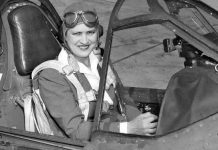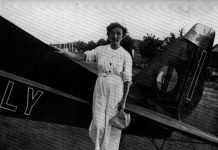It is with great pleasure that we dedicate today’s article to Harriet Quimby, an aviation pioneer who did not receive anywhere near as much attention as she should have.
It is a shame that aviation history has not dedicated a place of honour to this amazing woman, but we can’t blame the media for not having written much about her.
Her biggest venture happened on 16 April 1912, exactly one day after the sinking of the Titanic. The tragic event covered the front page of the newspapers for months, and Quimby merely received a brief mention in local news sections before fading entirely into the background. She was a journalist; she knew the rules.
Originally from Massachusetts, Harriet moved to New York to work as a theatre critic for Frank Leslie’s Illustrated Newspaper, later known as Leslie’s Weekly. In 1910, it was there that she met Matilde E. Moisant, the wife of John Bevins Moisant, the “King of aviators”, famous for being the first pilot to fly over the skies of a city with passengers on board.
Only one year later, on 1 August 1911, Harriet Quimby became the first woman to obtain a pilot’s licence in the United States, at the Aero Club of America.
But this was not her only great achievement.
Quimby heard a lot about the feats of Louis Blériot, the man who baptised his monoplane Blériot XI and was the first to fly over the English Channel in 1909.
If a man can do it, then so can a woman.
Her flight across the English Channel was perfect. Her only flaw was that, to ensure the best possible weather conditions, Harriet waited for that clear day after tragedy struck the greatest modern ocean liner in the world.
Quimby wasn’t destined for fame. Over the years, she also worked as a screenwriter, writing seven short films produced by Biograph Studios.
She created the characters played by silent movie stars such as Florence La Badie, Wilfred Lucas and Blanche Sweet, but she remained forever… behind the scenes.
Until today that is, at least for us.




